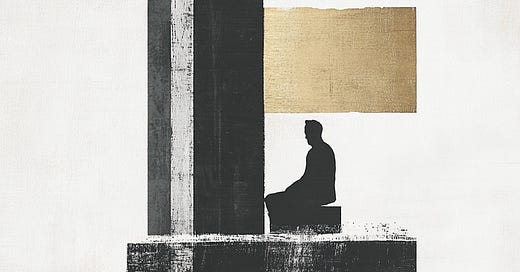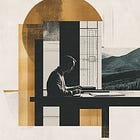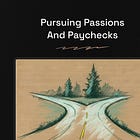Welcome to Unknown Arts, where creative builders navigate new possibilities. Ready to explore the unknown? Join me on the journey!
For most of my life, I’ve created things.
As a kid, I was always in the arts—choirs, plays, acappella groups. In adulthood, that instinct stuck around. I kept making: music, programming, design, writing, whatever idea grabbed me. I didn’t wait for permission or a paycheck. I just… made things. It felt natural, essential.
Somewhere along the way, I built an identity around it. I was the guy who could make something out of nothing. The one who produced. Who published. Who shared. Creating became the evidence of my worth.
And for a while, that worked.
Before the pandemic, I had found something like balance: a full-time design job I enjoyed, creative outlets through music and writing, and a rewarding social life. I wasn’t over-optimized or burned out—I was energized, creating a lot, and living my life.
But when the world shut down, so did that rhythm.
The silence of isolation swallowed me. My social life vanished, my job transformed into an endless stream of soul-draining Zoom calls, and my instinct to create morphed into a compulsion.
I felt trapped in a Groundhog Day loop where I was only partially alive. Eat, work, exercise, sleep, repeat—with little connection to the outside world. Creating something each day became my proxy for a day well-lived. Without it, I felt like I hadn’t existed.
So I leaned in harder. I wrote constantly. I published hundreds of essays and thousands of social posts. I reached for every ounce of validation I could find online and mistook momentum for meaning. I wasn’t just creating because I loved it—I was creating to prove I was worthy.
That cycle repeated for years. My single-mindedness was useful distraction from confronting my discontent. If only I could reach the next benchmark, then I'd be worthy. Then I could relax. Then I could be happy. What began as a natural, joyful, instinct to create had become an addictive compulsion to prove myself.
Until I started asking: Who was I trying to prove this to? And why?
Because the truth is no one around me was asking me to keep producing. My friends weren’t tallying my output. My family didn’t love me less when I didn’t publish. My audience hardly noticed if I took a week off to rest. The only one demanding all of it was me and I was letting other parts of my life suffer in the process. I needed to make a change.
Looking back, this moment in my creative journey reminded me of a shift I once made as an actor. The first method I learned as a teen, the Stanislavski System, emphasizes logical character study to discover emotional truth. But I always struggled with that approach because it fed my tendency to over-intellectualize everything. Later, while taking improv in Chicago, I discovered an alternative method called the Meisner technique. It's almost entirely grounded in presence—immersing yourself in noticing minute details of what's happening right in front of you. It uses repetition to break you out of your intellectual brain and into instinctual connection with your scene partner. This worked much better for me because it guided me into letting go.
That's the shift I'm trying to make now in my creative life. Moving from over-intellectualization to presence. From proving myself logically to connecting authentically—with myself, with others, with the work itself.
I’m learning to unhook the wires I crossed. To remember that I can still create—probably more than most—but I don’t need to prove anything by doing it. I don’t need to optimize every output or chase subscriber counts for validation.
I just need to live and let the work flow naturally from that.
See you next time,
Patrick
Find this valuable?
Share it with a friend or follow me for more insights on Substack Notes or LinkedIn






